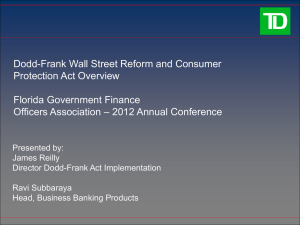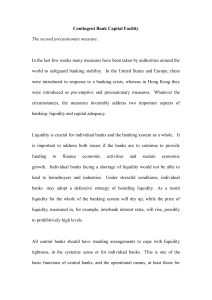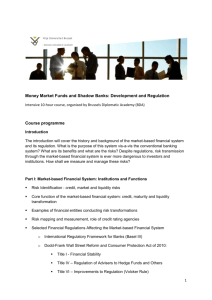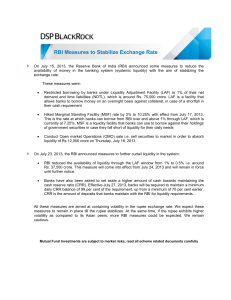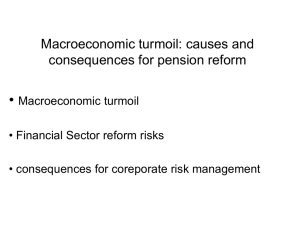Risk management
advertisement
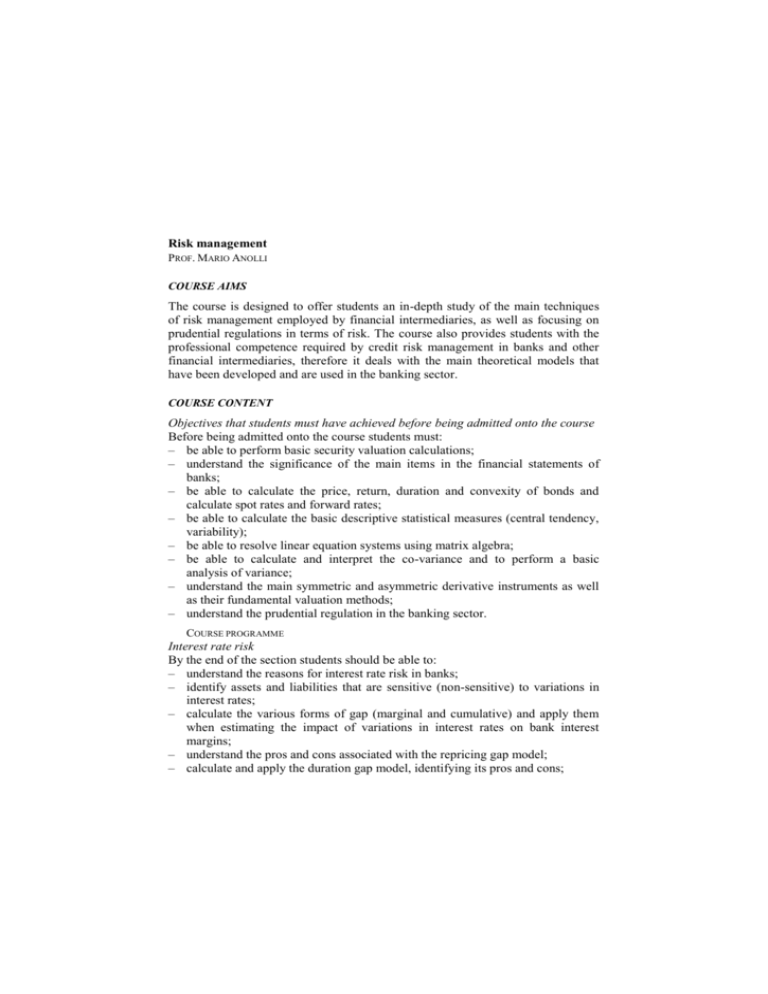
Risk management PROF. MARIO ANOLLI COURSE AIMS The course is designed to offer students an in-depth study of the main techniques of risk management employed by financial intermediaries, as well as focusing on prudential regulations in terms of risk. The course also provides students with the professional competence required by credit risk management in banks and other financial intermediaries, therefore it deals with the main theoretical models that have been developed and are used in the banking sector. COURSE CONTENT Objectives that students must have achieved before being admitted onto the course Before being admitted onto the course students must: – be able to perform basic security valuation calculations; – understand the significance of the main items in the financial statements of banks; – be able to calculate the price, return, duration and convexity of bonds and calculate spot rates and forward rates; – be able to calculate the basic descriptive statistical measures (central tendency, variability); – be able to resolve linear equation systems using matrix algebra; – be able to calculate and interpret the co-variance and to perform a basic analysis of variance; – understand the main symmetric and asymmetric derivative instruments as well as their fundamental valuation methods; – understand the prudential regulation in the banking sector. COURSE PROGRAMME Interest rate risk By the end of the section students should be able to: – understand the reasons for interest rate risk in banks; – identify assets and liabilities that are sensitive (non-sensitive) to variations in interest rates; – calculate the various forms of gap (marginal and cumulative) and apply them when estimating the impact of variations in interest rates on bank interest margins; – understand the pros and cons associated with the repricing gap model; – calculate and apply the duration gap model, identifying its pros and cons; – know how to map out financial instrument cash flows (cash flow mapping); – understand the significance of internal transfer rates and how they are used. Liquidity risk By the end of the lessons students should be able to: – understand the reasons for the presence of liquidity risk in banking; – understand the main techniques for measuring liquidity risk (market and funding liquidity risk); – calculate liquidity gap and liquidity risk indicators; – understand the main liquidity risk management strategies. Market risk By the end of the lessons students should be able to: – understand the concept of Value at Risk (VaR); – know how to calculate the VaR of a position or of a portfolio of positions using the variance/co-variance (parametric), historical simulation and Monte Carlo approaches; – understand the logic and application of stress tests and/or the problems of evaluating (backtesting) VaR models; – understand the expected shortfall concept and the fundamentals of the extreme value theory; – know how to use the VaR concept for market-risk budgeting, for the calculation of performance adjusted measures and for capital allocation. Credit risk By the end of the lessons students should be able to: – understand the causes of credit risk; – understand the method of carrying out linear discriminant analysis and regression models; – estimate the probability of default based on corporate bond spread; – understand the Merton's model and the KMV model methodology; – understand the factors that influence the recovery rate in case of default and the methods of estimating it; – understand the significance of rating and the method used for assigning it, understand the rating migration process; – understand the concept of the VaR of a credit exposure portfolio; – understand the CreditMetrics™, CreditPortfolioView and CreditRisk+ approaches; – understand the merits of different portfolio approaches to estimating credit risk; – know how to calculate the impact of credit risk quantification for pricing credit exposures and for estimating risk adjusted financial performance measures. Operational risk By the end of the lessons students should be able to: – understand the concept of operational risk, and identify its components and types; – understand the specificity of operational risk compared with financial risk; – understand the method of identifying risk factors and the main approaches to measuring expected and unexpected losses. Regulatory capital requirements By the end of the lessons students should be able to: – understand the objectives and general structure of the prudential control structure on banks; – understand the solutions that can be adopted for the so-called pillar one regulation (standard approach, internal-rating based approach); – understand the role of the so-called pillar two and three (role of supervisory authorities and of market discipline). Capital management and value creation By the end of the lessons students should be able to: – understand the objectives, strategies and instruments of capital management; – understand the capital allocation process; – calculate the main risk adjusted measures (Raroc, Rorac etc.); – understand the organisational and operational implications of capital management; – estimate the cost of capital and the value creation relationships. READING LIST Slides from the lessons and other material (in particular, articles and working papers), which will be made available on the Blackboard platform. RESTI-A. SIRONI, Risk Management and Shareholders' Value in Banking, John Wiley and Sons, 2007 (ISBN: 978-0-470-0298-7). TEACHING METHOD The course consists of classroom lessons, practical exercises and seminars given by outside experts. ASSESSMENT METHOD Fila written exam. By the end of the tenth week all the students (either regularly attending classes or not) will be required to post a problem set in the dedicated section ot the Blackboard site. The problem can weigh up to 15% of the final mark. some problem sets will be discussed in class on a random basis. NOTES Further information can be found on the lecturer’s webpage http://www.unicatt.it/unicattolica/docenti/index.html or on the Faculty notice board. at

